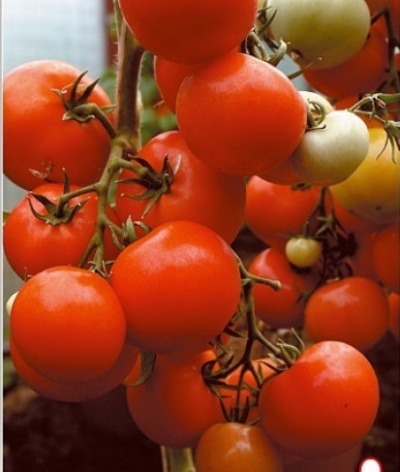
- Authors: Myazina L. A
- Year of approval: 2001
- Category: hybrid
- Growth type: determinant
- Appointment: universal
- Ripening period: early
- Ripening time, days: 90
- Growing conditions: for open ground, for film greenhouses
- Transportability: Yes
- Bush size: undersized
The Summer Garden is a name that refers to one of the most significant places in St. Petersburg, which will appeal to many summer residents. But for sure they would also wish that they would like the harvest of this tomato. And to achieve this goal, additional information about him and about the features of cultivation is very relevant.
Breeding history
Such a plant was created by the famous breeder Myazina L.A. It was officially allowed to be used in personal gardens in 2001. Therefore, we can confidently conclude that this culture has a long history.
Description of the variety
The Summer Garden is a vivid representative of determinant hybrids. The culture has a universal garden purpose. Most importantly, it is suitable for both open soil and greenhouses covered with plastic wrap. Low-growing bushes in open ground grow up to 0.6-0.8 m; in greenhouses, they are able to rise to 1.2-1.4 m. Plants are relatively compact and do not have boles, covered with moderately large green foliage.
The main qualities of the fruit
Unripe berries of the Summer Garden will have a light green color. When ripe, they turn into an attractive red color. The mass of a single tomato in most cases ranges from 120 to 130 g. Other features:
is characterized by a rounded shape;
the first inflorescence appears above 6-7 leaves;
the next inflorescences will be laid in 1-2 leaves;
the brush contains from 5 to 8 tomatoes;
there is no articulation on the stalks;
the main stem gives 3-4 clusters.
Taste characteristics
The peel of the Summer Garden berries is dense. However, it does not have any unpleasant effect on their taste. The pulp is distinguished by its expressive density.
Ripening and fruiting
The Summer Garden belongs to the early group of cultures. On average, the berries ripen in 90 days. This is how much time passes between the formation of the first green growth and the readiness of the crop for harvest. The harvest period spans July and August.
Yield
The cultivation efficiency of the Summer Garden is quite high. It is stated that it is capable of giving 4.2 kg per 1 m2. However, as with any other variety of tomatoes, the specific result largely depends on compliance with agricultural standards. According to other sources, the collection of 4 kg - from 1 bush, and on 1 "square" they collect up to 17 kg.
The timing of planting seedlings and planting in the ground
Sow seeds in containers during March. But at the same time, one must remember about the rule of timing. It consists in relation to this variety in the fact that between sowing and transshipment of plants to a permanent place should pass about 50-55 days. It is easy to understand that the landing itself takes place in May. The specific moment is chosen by the gardeners themselves, taking into account the specifics of the situation.

Growing tomato seedlings is an extremely important process, because it largely depends on whether the gardener can harvest at all. All aspects must be taken into account, from seedbed preparation to planting in the ground.
Landing scheme
When using a glazed greenhouse, an average of 1 sq. m should have 2-2.5 bushes. If a film cover is used, this figure increases to 3-3.5 bush. In open areas, no more than 4 plants are planted on the same area.

Growing and care
Late blight and crop cracking are unlikely. However, gardeners will only benefit if they play it safe against these problems. The same applies to the declared resistance to sudden temperature fluctuations. For the Summer Garden to produce a good harvest, it needs land with a neutral acidity level. You can improve the condition of the earth with the help of organics and minerals.
Watering is usually done every 3-4 days. In rainy weather, it can be practiced less often, and sometimes even completely excluded. Each bush needs to be watered with 1.5-2 liters of settled warm water. Weeding should be done at least every 2 weeks. After each watering or rainfall, the soil should be loosened, but not too deeply to avoid destruction of the roots.




A plant needs different micronutrients at each stage of growth. All fertilizers can be divided into two groups: mineral and organic. Folk remedies are often used: iodine, yeast, bird droppings, eggshells.
It is important to observe the rate and period of feeding. This also applies to folk remedies and organic fertilizers.


Growing regions
A similar tomato can be safely recommended for:
central Chernozem region;
Moscow region;
Volga region;
Ural;
Siberia;
The Far East;
The North Caucasus;
regions of the north and north-west of the European part of the Russian Federation.
Review overview
The summer garden has been cultivated by many farmers for a number of years. The culture produces excellent results consistently. In addition to the quantity, the harvest of this variety is also distinguished by an impressive quality. In addition, the dimensions of the fruits are uniform, which is an important advantage for whole canning.Step-sonning is required only relatively rarely, and other care is also not too difficult.

























































































